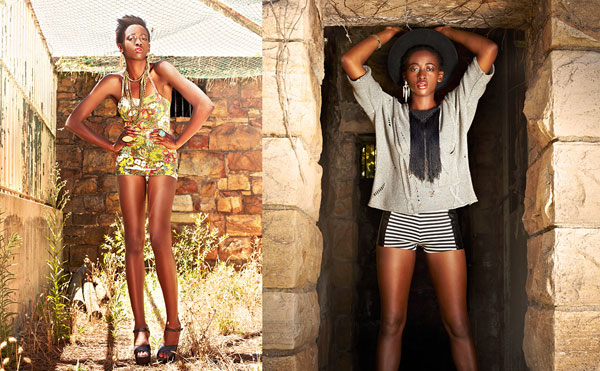Hailing from Pietermaritzburg, South Africa Tim Atkins is one young photographer worth watching. At 27 years old he has already worked with several internationally known photographers and is a focused artist. After receiving a diploma in fine art photography he began his career as a professional photographer and has since been busy expanding his portfolio and skill set. We had a chance to catch up with him and talk about his latest photo shoot, African Zoo.
What led you to taking up photography?
My photography interest started at a young age where I went on a safari trip at the Masai Mara Game Reserve in Kenya and I decided to take photographs of the wildlife. I saw that the developed images were quite pleasing and I knew then that I would want to be a photographer. Although my work is quite different from wildlife today I shoot with number of different skill sets as I enjoy the different experiences and believe in not keeping all your eggs in one basket.
Are there any particular lessons you have learned from the photographers you have worked with that you would share with others who are interested in photography?
I have worked with many great photographers in Cape Town but one in particular, Micky Hoyle, was very influential on what I have today and is an extreme specialist in natural lighting.
In my recent years I’ve learned different photographers have their own strengths and weaknesses. I’ve tried to take all the positives out of it and work on my own to improve my skills. Photography is all about subject and light. If you understand lighting you are more than half way there to creating a great image. So for my own work I try to get the image as best as possible without editing the images too much.
Was the African Zoo shoot the first that you have done of that kind, it being of a more commercial and fashion oriented nature?
The African Zoo fashion shoot was inspired by the old Cape Town Zoo situated next to UCT. None of the younger generation actually knows it exists today but we tried to portray powerful imagery of an animalistic kind. Although I shoot a lot of fashion this was my first fashion shoot production of its kind with team members I had not worked with before. Mia Williams, the stylist, created a concept of old / new fashion items, clothing to bring together this forgotten place and today’s modern styles. Nicola Loots, the makeup artist, and Jolie Bashala from Base Models helped to make this day possible as well.
Did you have any objectives for the shoot?
To create powerful imagery of an animalistic kind. Showing the contrast of being trapped in cages like an animal with the free and fashionable in nature. To show beauty in what was once a memorable place in society, to resurrect a forgotten place.
Do you usually have an objective when you photograph?
Our team usually has a conceptual idea and we plan locations and outfits accordingly. We shoot these ideas purely for our portfolios or publications so that we can decide what to showcase without any influences from outside of the team.
Having no influence from outside of the team you work with, is that something that is desirable for you? Can you explain the idea behind that choice?
In terms of working with the team for the first time for this shoot, each person has their own qualities and skills so I didn’t want to plan too much so that the shoot becomes stale. We like to let our creative juices flow on set and to take advice from each other so it becomes a team effort. The only brief I gave the team for this project was that we are shooting at the old Cape Town Zoo with a Congolese model in an animalistic way.
Are there any sources of inspiration that you find yourself continually gravitating back to?
My inspiration comes from day to day things around me. People, food, art, fashion. I am constantly aware of other photographers around me and try to do something a little different. I will see an image, an item in nature or a movie and will then create an idea on the spot. Sometimes these ideas manifest into great imagery and sometimes the ideas don’t happen at all.
Images: Tim Atkins Photography
Words: Emma Remington













